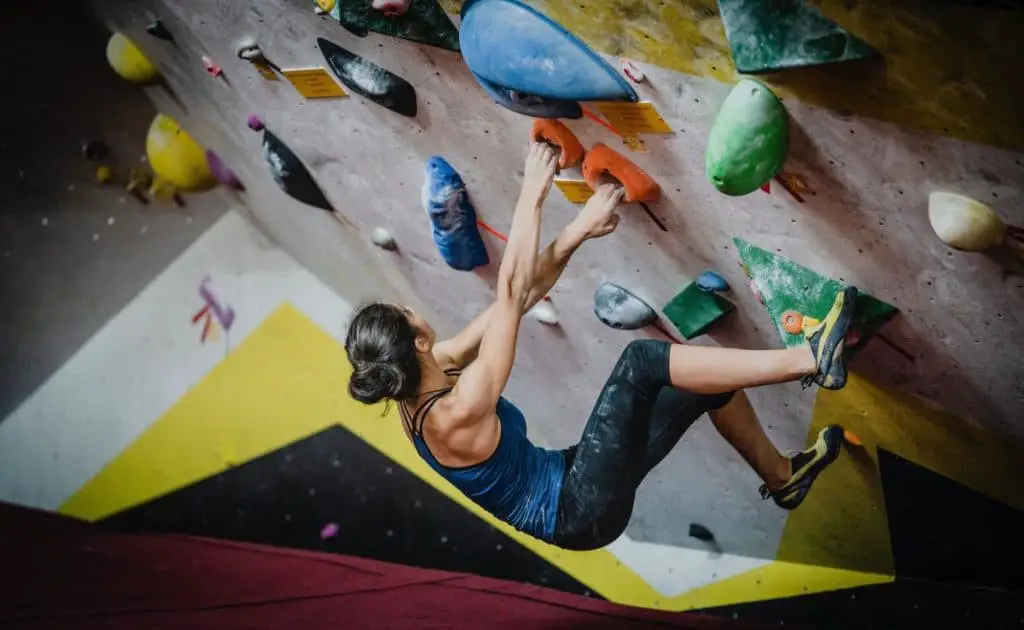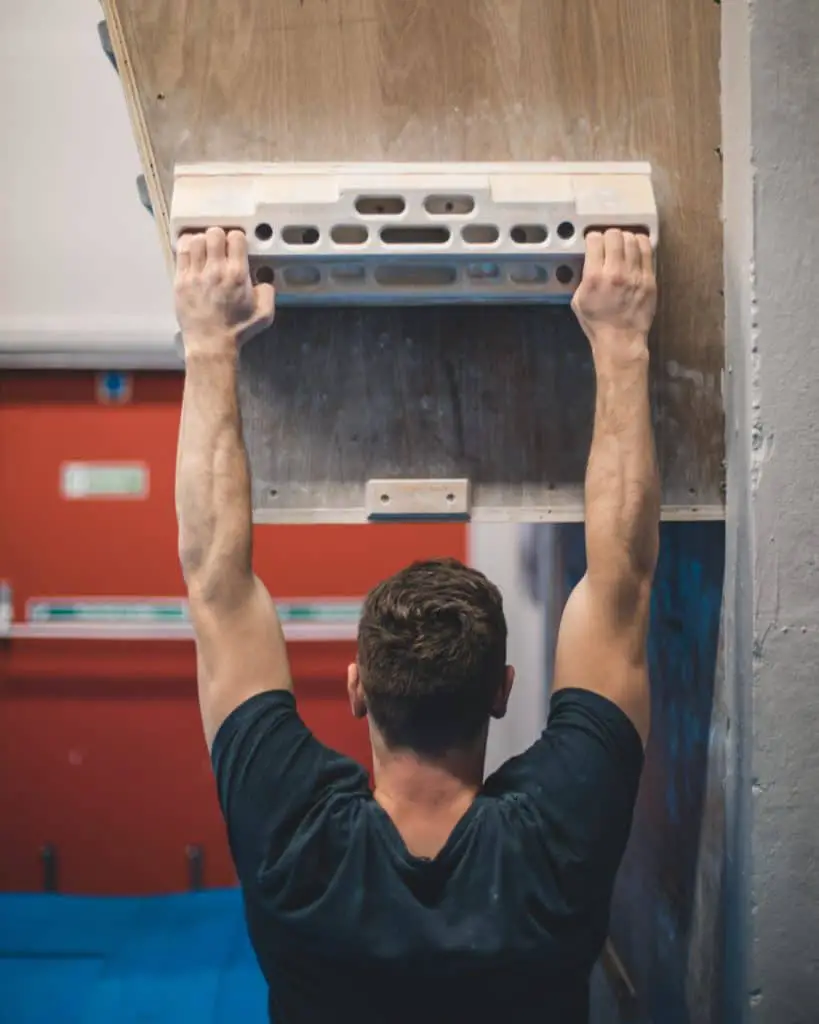
There are few things in life better than rock climbing. It’s got it all: it’s a great workout, a fun activity, it has an amazing community of people, and can be a life-long pursuit. Unfortunately, rock climbing can be complex when first starting out – and beginners can find themselves making quite a few mistakes.
Luckily for you there’s a few more experienced climbers, like myself, who understand the mistakes they’ve made as a beginner. If you’re afraid you might be doing something wrong, fear not! I’ve listed 10 crucial mistakes beginner rock climbers make, both in terms of safety and progress, so you can see what you shouldn’t be doing – and if you are doing something wrong, you can learn how to fix it!
Here’s the 10 mistakes that beginners make when indoor bouldering:
- Bad footwork – if you’re using your feet at all.
- Don’t rush. Trying to send a climb without focusing on technique
- Not resting properly – either too much rest or too little rest
- Don’t jump down after you’ve sent a climb – climb down instead
- Not knowing the rules and etiquette of indoor rock climbing
- Being overly-excited and buying the wrong type of shoes
- Sacrificing technique because your muscles can’t take it – especially your forearms
- Not caring about finger injuries
- Using a hangboard too early instead of waiting until you’re ready
- Focusing on sending climbs instead of developing technique
Read on to learn more about each individual mistake.
1. Bad footwork – if you’re using your feet at all.
Most novices make this same mistake when rock climbing; it’s something that’s happened to most of us. We primarily use our hands, arms and upper back to climb. On one side that’s great – it gets those muscles fired up and going! However it has a major downside.
We slowly learn how to use our upper body strength to climb – but what we don’t realize is that we are forgetting about 50% of the human body. We don’t focus on how to use our feet and legs at all. At least, not correctly anyway.
After a while, we realize we should’ve been using our entire body to rock climb, and it seems we become better overnight. Most people have no idea how to employ proper footwork to rock climb. Who can blame them? At first, we don’t use our feet at all! And when we start using them, we don’t know what to do!
So, here’s the thing. Because we don’t want to overcomplicate things, we’ll keep this one simple: stop using the middle of your foot to climb on footholds. You’re not walking, you’re climbing! Use both your feet as if they were hands and grab onto holds using your toes, or the outside and inside of your foot. Once you advance you’ll also learn how to toe hook and heel hook.
Try using your these parts of your feet next time you’re rock climbing, it’ll be a game-changer!
2. Don’t rush: Trying to send a climb without focusing on technique
Besides lower body issues, there’s a second problem most beginners rock climbers will face, no matter who they are. They rush too much. I’ve seen this more true for men than women (I have no idea why).
Most beginners treat rock climbing like a sprint. Instead of taking time to learn and slowly develop their technique, they throw caution out of the window and try to make it to the top as fast as they can.
There’s nothing wrong with showing off every once in a while. And we’ve a lot of us have raced our friends once or twice before. But the thing is, when you are starting out, you need to focus on developing your technique.
Try to be mindful of each movement: pay close attention to your hands and feet – how are you grabbing, reaching, and transitioning. It’s a conscious effort. Eventually, it will come naturally, and rushing will be a thing of the past.
The Instagram video below is me sending a tricky V5 which required slow transitions to avoid barn dooring on multiple occassions.
3. Not resting properly – either too much rest or too little rest
This isn’t a “beginners-only” mistake, it’s is a common one. But it’s good to keep it in mind next time you are rock climbing. Apparently, most rock climbers think there are two ways to rest between each turn: taking barely any time to rest or taking too long to rest and forgetting to warm their muscles back up once they return to the wall.
If you think you are above and beyond resting, think again. You aren’t doing any favors for yourself by not taking the right time to regain your strength back. Instead, it’s detrimental: you can cause long term and short term injuries by climbing without rest and forcing yourself to climb through muscle fatigue.
This is especially true for beginners who lack the muscle endurance required for climbing. I’ve written a whole article on how to improve muscular endurance for climbing which you can find here.
On the other hand, by resting too much, you are not doing any better especially if you don’t warm up again. If you lose track of time and spend 20-30 minutes chatting between climbs, you will also be prone to injuries. You warm-up before starting a bouldering session for a reason: you need your muscles ready for explosive and persistent movements. By resting too much, you’ll cool down and then you’ll need to warm up again.
4. Don’t jump down after you’ve sent a climb – climb down instead
The superhero landing looks cool. You reach the top and jump down as if you were in a movie. But this is real-life – and doing this has real-life consequences. Instead of looking cool, keep it safe. That way you’ll be able to climb when you’re old.
Why is jumping down from a bouldering wall unsafe? Because your body is not made for taking that much stress when you land! You compress the vertebrae in your spine which puts stress on the lumbar region of your back. It also puts a lot of stress on your knees, feet and hips. You’re asking for a long-term injury by doing this. I’d also advise you to learn how to fall (and how not to fall) off a bouldering wall, this is essential for the safety of your body over time.
You might think you’re body is tougher than your average climber because you have been jumping down for a long time now without any injuries. Well, think again… these kinds of injuries build over time – and one day you could find yourself with terrible knee or back pain you can’t shake. It’s not worth it! WHERE POSSIBLE, climb down rather than jump.
5. Not knowing the rules and etiquette of indoor rock climbing
Nearly every sport or activity has rules and etiquette of their own and rock climbing is no different. Most people learn them over time and, every once in a while, you discover a new rule. They are all intuitive. But, sometimes, that’s not the case.
To keep everyone on board, here are a couple of unspoken rules of rock climbing:
- Don’t shout or yell constantly. Rock climbing can be a frustrating at times, and you can take out a little of that frustration by voicing your issues. Doing this all the time, however is a big no-no. Don’t make it annoying for everybody else.
- Don’t hog the wall. Share. We’re all there to climb, so take turns and keep it civilized.
- When it comes to giving advice, give none unless somebody asks first. This is called “beta spray”. Just because you know the beta (the right way to send the climb) does not mean people want you to tell them. Some want to find out on their own.
- If you want beta advice then just ask a more experienced climber. They’ll usually say yes, but make sure you do it at the right time. Wait until people are done with their own problem first.
- When in doubt, ask “Is this wall taken?” or “Is somebody going next?” It’ll save you a lot of trouble.
6. Being overly-excited and buying the wrong type of shoes
When we begin our rock climbing journey, we learn there are all sorts of things we can buy to make our experience better. You might think the higher the price, the better the shoe. Well, before you get your credit card out, take a breather.
Make sure you know what you are getting into before you buy anything. Learn about it online, ask the veterans at your gym as well. Try and buy something that will suit your needs and budget.
I’ve spent years trying out different shoes, finding the best ones that work for me in particular types of climbing – whether they’re shoes specific to beginners, bouldering, sport climbing or just as an all-round shoe. I’ve always tried to focus on getting the best value for my money while increasing my performance. If you want to take a look at a list I’ve made of my recommended climbing shoes then you can take a look here.
7. Sacrificing technique because your muscles can’t take it – especially your forearms
Bouldering will tax a lot of muscles in your body. Without proper technique, you’ll start using some muscles more than others. You’ll do alright at first – but, eventually, you’ll find yourself either stagnating or injured.
Hang with straight arms where possible when you’re climbing. Beginners tend to have weak forearms and therefore use their biceps to keep their body up when hanging. This is wrong technique. It’ll be incredibly hard and your forearms will be in a lot of pain at first, but it’s the best way to learn proper technique and develop strength and endurance – especially when you’re a beginner. After you have a little bit of experience you can try more advanced techniques.
Check out this video of me using the straight arm technique on this V4-V5:
8. Not caring about finger injuries
Most beginner climbers are quick to fear back injuries. Knee injuries are also a big worrying matter. What beginners seem to ignore are finger injuries. There might be a slight sharp pain in your finger flexor, or even your forearm flexor… but that’s no reason to stop, right? Wrong!
Your fingers are a key element when you’re rock climbing and they can damage very easily, especially for beginners. If you’ve just started climbing then your fingers have not gone through this much of a workout in… probably ever! So, pay close attention to fingers at all times. If you feel something different, even a very small but sharp pain, stop climbing and ice them when possible.
9. Using a hangboard too early instead of waiting until you’re ready

Rock climbing is a world of its own. And like every other sport out there, there are specific ways to become better. One unique thing about climbing is the use of a hangboard. It’s a weird-looking board that’s used to train your finger strength and grip. Be advised, though, you should only use it to train when you are advanced enough.
The hangboard is a fantastic tool if you can handle it, but beginners do not have the forearm and finger strength to use a one safely. Hangboards can damage your finger flexor tendons if used too early. You can usually start using a hangboard safely once you’ve been climbing for around 6 to 12 months. Here are my recommendations of the best hangboards to buy. If you’re a beginner, plain old climbing will have to do for a while before you can jump onto the hangboard.
10. Focusing on sending climbs instead of developing technique
How can you measure your progress if not by checking how much you have accomplished? Well, you can see how good your technique is getting overtime. This should be number one on your priority list! Technique comes first; sending routes (aka finishing a climb) is a distant second!
Of course, one comes with the other. If you develop good technique, you’ll send more climbs. If you are completing more routes, you could say you have a better technique, right? Well, not so much. Sometimes, we manage to finish routes because of other factors – like pure, brute strength. And we don’t want to rely on strength; we want to be technical rock climbers! While strength does have its advantages, it decreases over time when you use it. Plus, if you’re younger you won’t have as much strength as you get older. If you focus on technique everything else will happen in due time.

